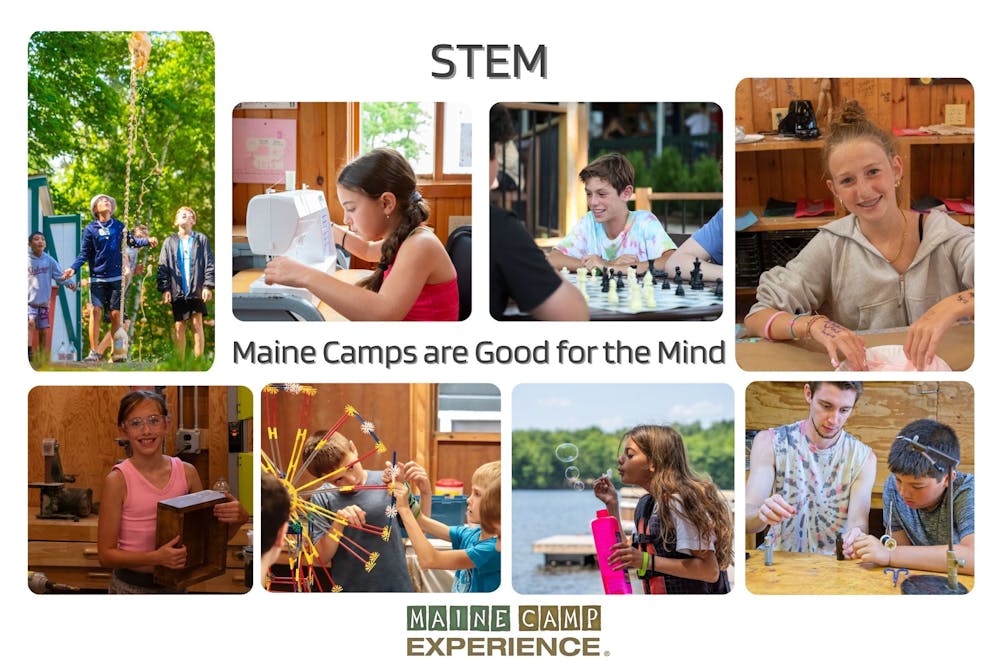
STEM at Maine Camps
September 3, 2025
Sports, arts, and smarts! Did you know that STEM education is at play in a Maine Camp summer? While campers are having fun with camp friends and enjoying activities, they’re also learning through engaging STEM (Science, Technology, Engineering, and Math) experiences that educate, encourage curiosity, and provide hands-on learning.
Another benefit - these activities, which can be messy at times, like making slime and the exploding soda bottle experiment with a Lifesaver, happen at camp (not your home - lol).
Here are just a few examples of the many activities considered STEM at Maine Camps:
-
Chess develops skills like problem-solving, critical thinking, strategic planning, pattern recognition, and spatial reasoning. Chess is rooted in logic and mathematics, and includes probability, and abstract thinking.
-
Woodworking integrates engineering and math in design and construction, technology in tool use, and science in understanding wood properties. Campers calculate angles and structural integrity to shape and join pieces.
-
Rocketry involves scientific principles, technological tools, engineering design, and mathematical calculations (plus it’s cool to paint the rocket and fun to launch). Building and launching rockets helps campers learn about physics, materials science, design, and problem-solving.
-
Arts like Ceramics and Glassblowing. In ceramics, potters understand the composition of clay, they see the chemical reaction in the kiln that creates colors and finishes, and they engineer well-fitting shapes like lids for little bowls. Glassblowing requires an understanding of the physics of heat transfer, the chemical reactions in glass, and the engineering of the tools and processes.
-
Sewing helps develop spatial reasoning, problem-solving skills, and creativity. It integrates math for measurements and patterns, engineering for construction and design, technology with sewing machines, and material science with fabrics.
-
Bubbles allow for hands-on exploration. Campers can create bubble solutions, design wands, study shapes and volumes, and see chemistry and physics at play.
-
Slime is considered a STEM activity because it involves chemical reactions, polymer science, exploring non-Newtonian fluids like oobleck, and requires measuring and adjusting.
-
Lanyard involves design thinking. When crafting lanyards, campers make choices about materials, measurements, and construction methods, naturally engaging in problem-solving and reflecting on cause-and-effect, which are key aspects of STEM learning.
Campers are using their “thinking caps” in these camp activities while having fun and also learning some pretty cool stuff, too!
Maine Camp Experience Resources & Tools: Looking for the perfect Maine camp for your child? Try out our helpful tool where you can select a camp by choosing: type of camp (girls, boys or coed) and session length (1-8 weeks). It helps to narrow down a few camps to a manageable list that includes rates. Then you can research these camps in more depth. Next, be sure to contact our Maine Camp Guide, Laurie to discuss these camps as well as for free, year-round advice and assistance on choosing a great Maine summer camp for your child.